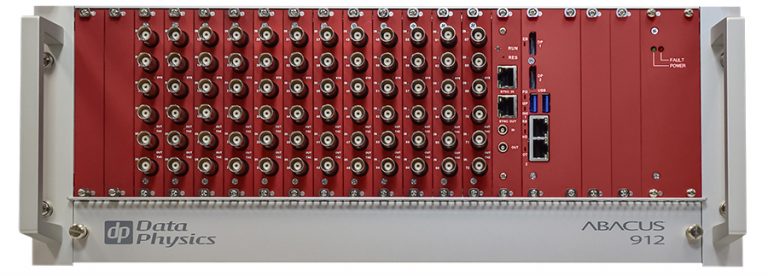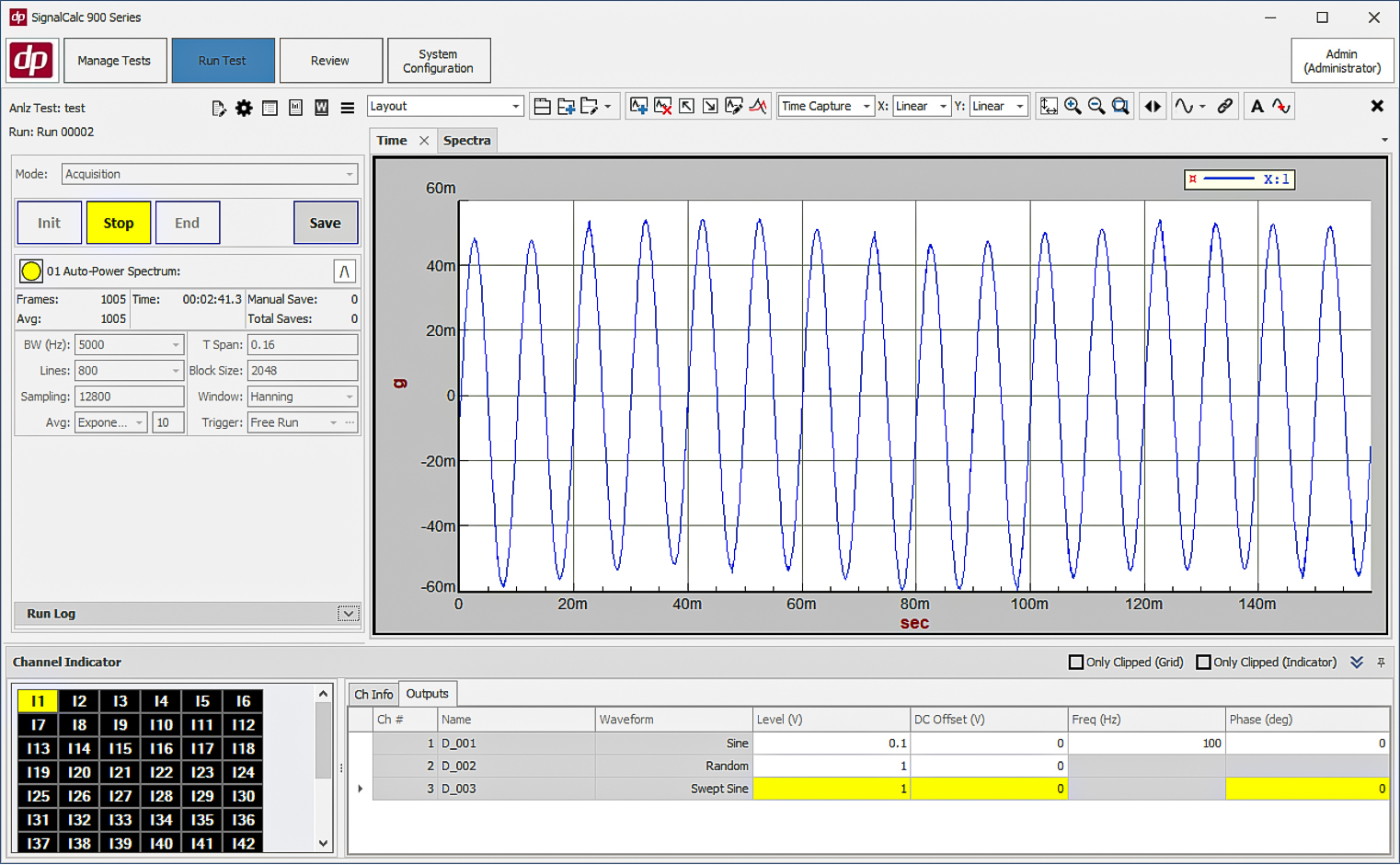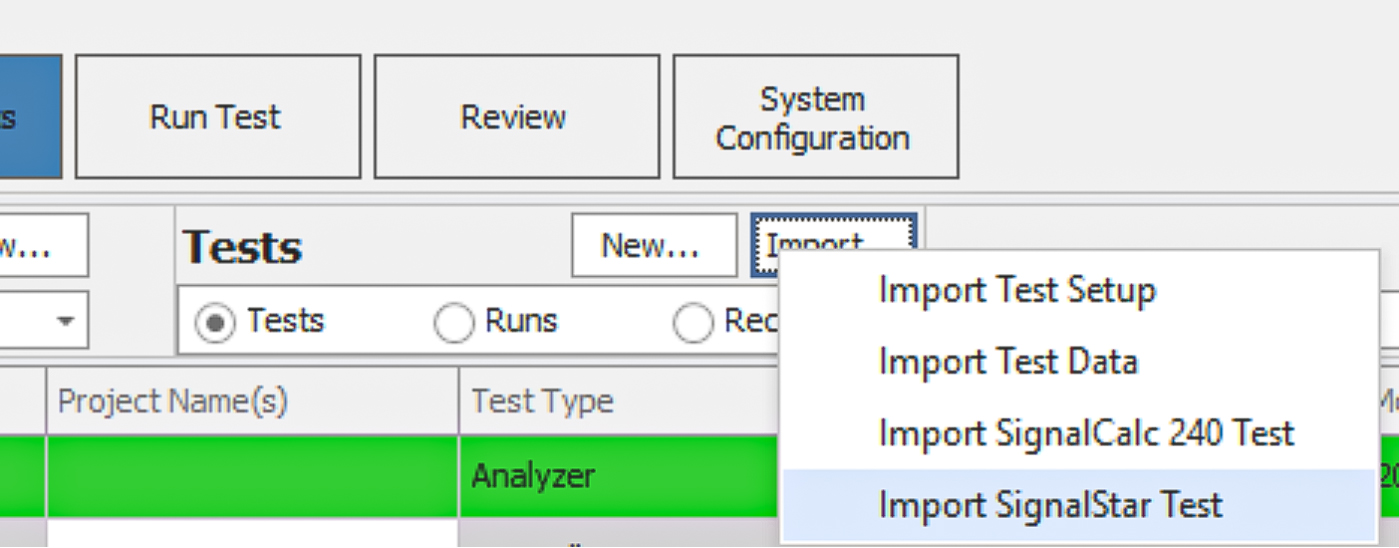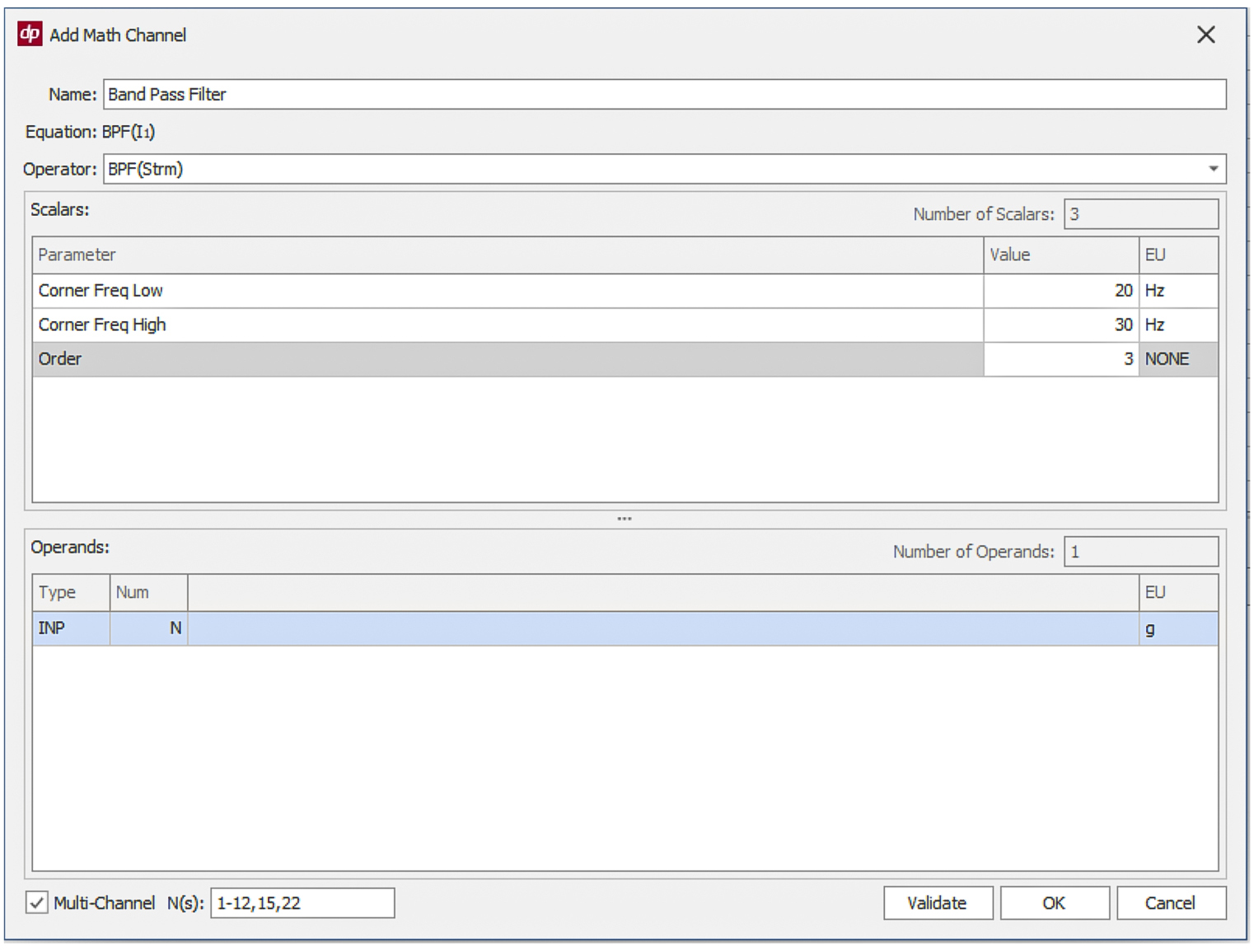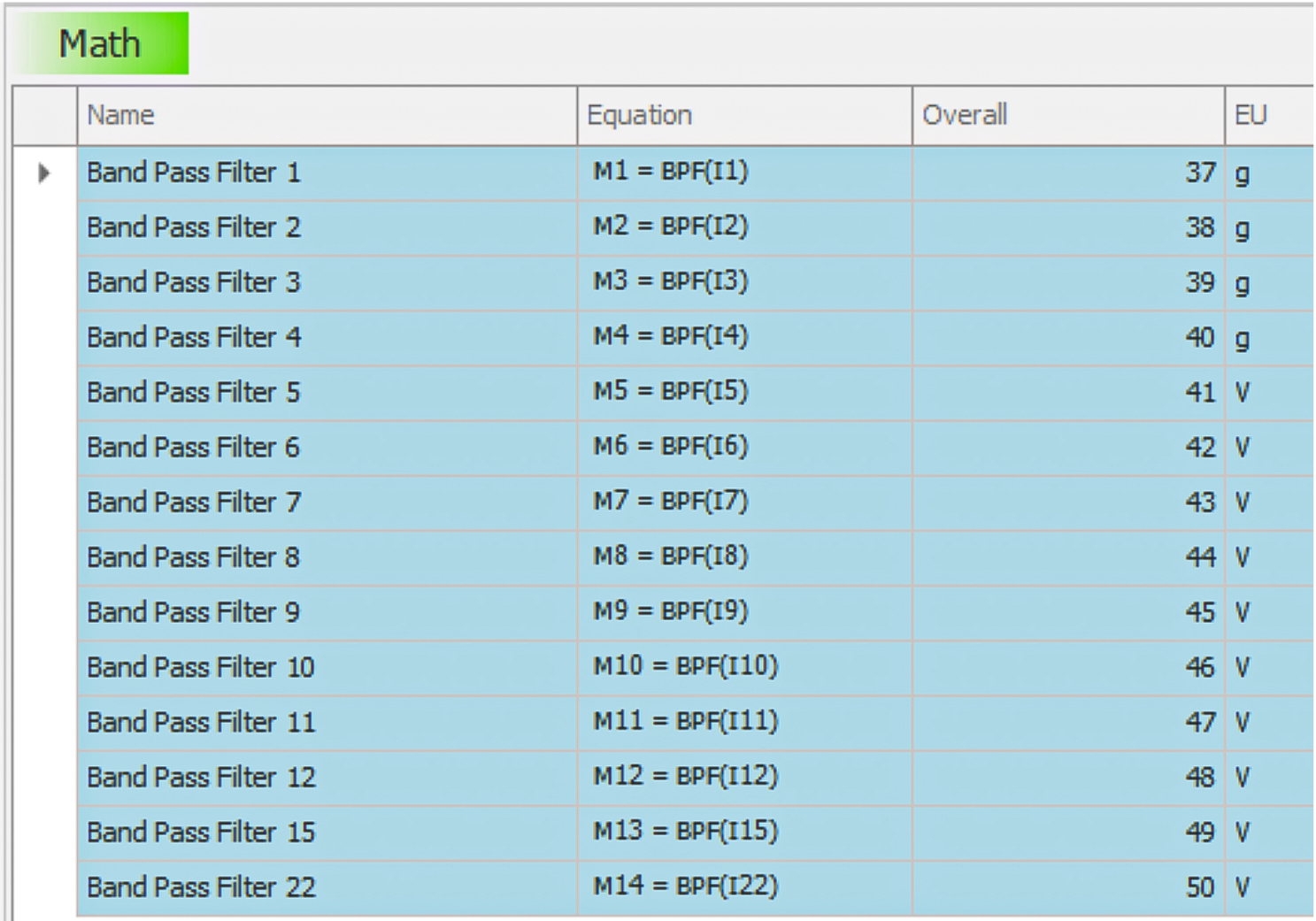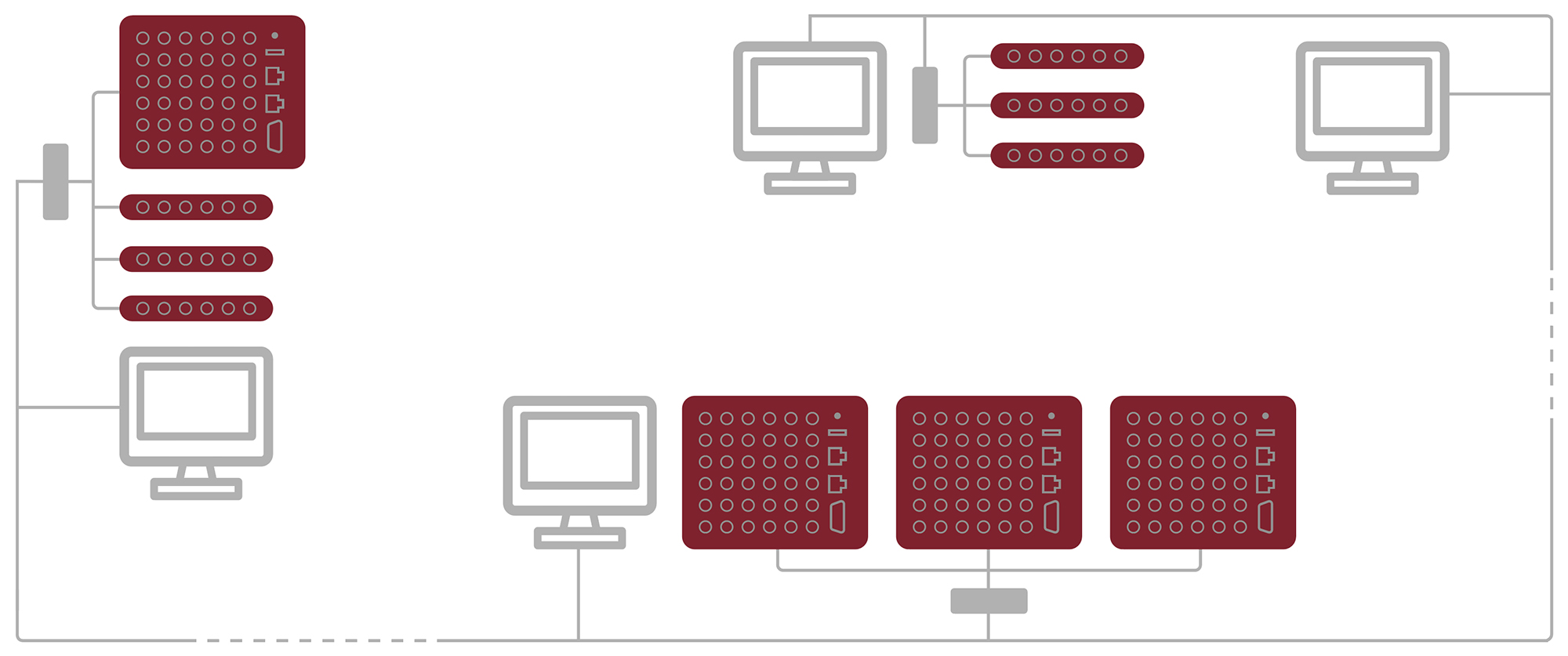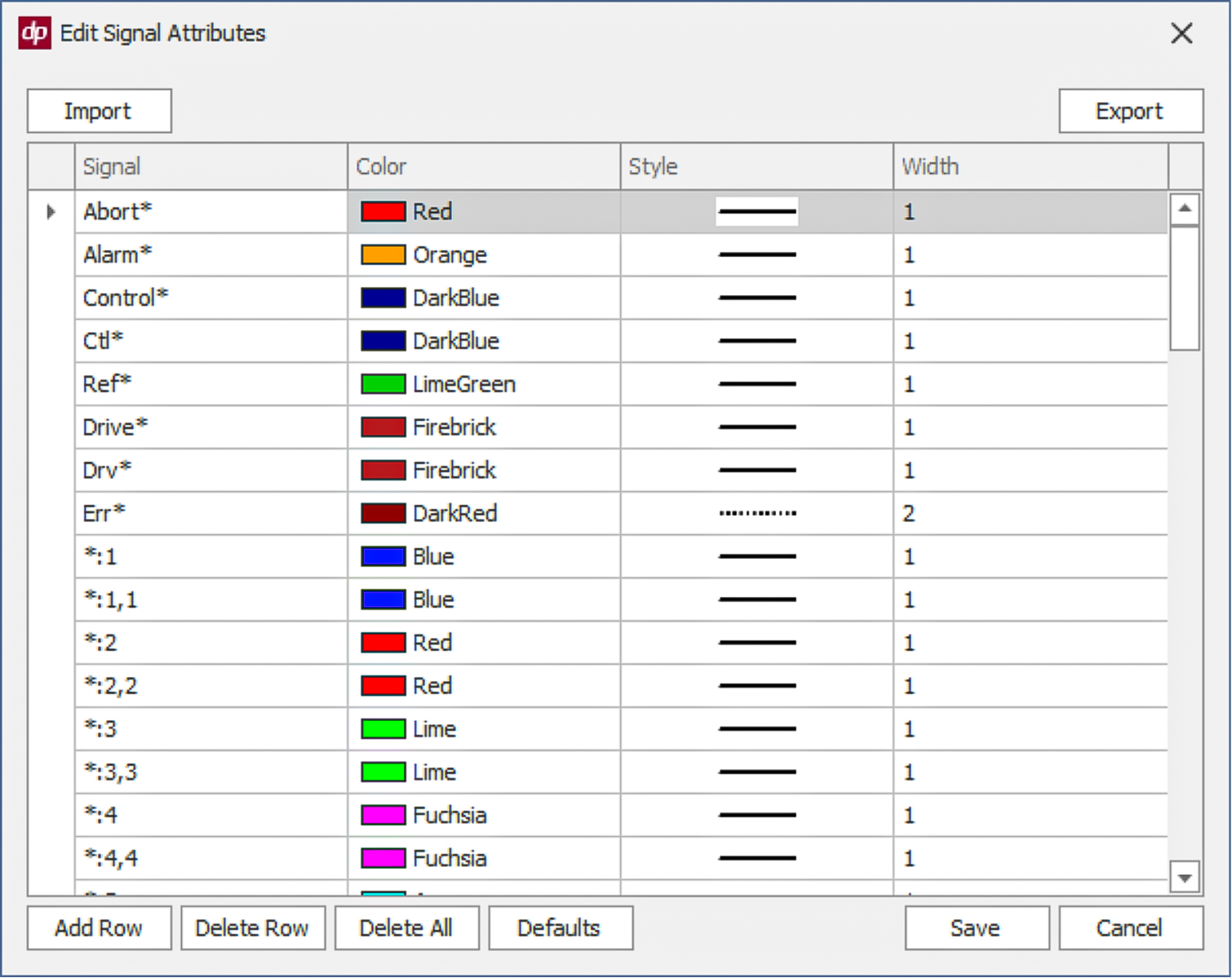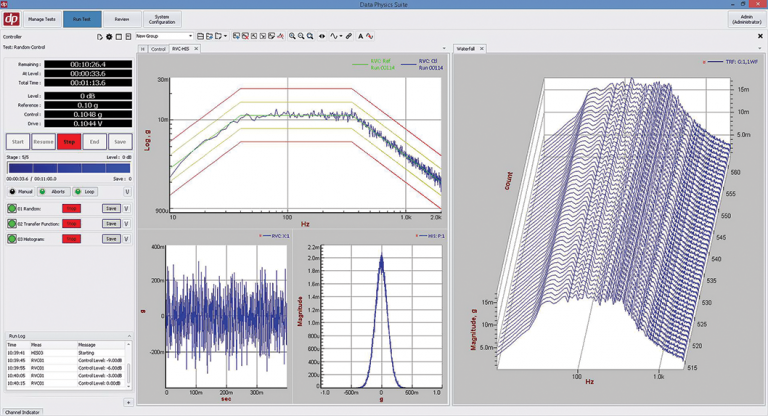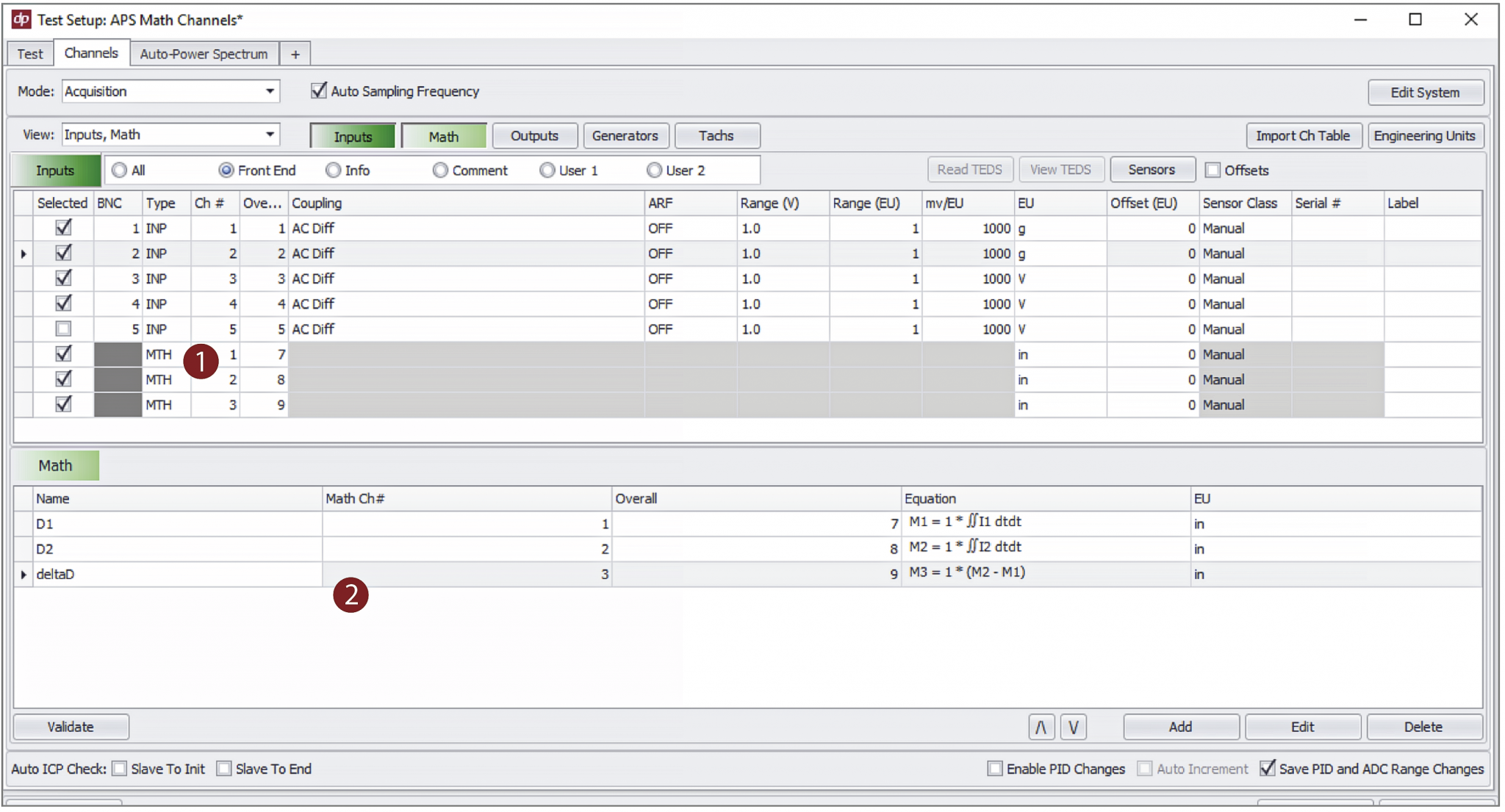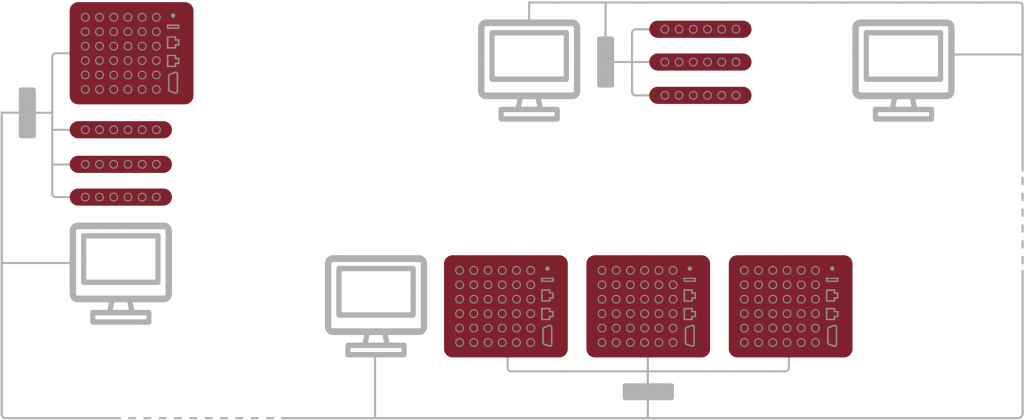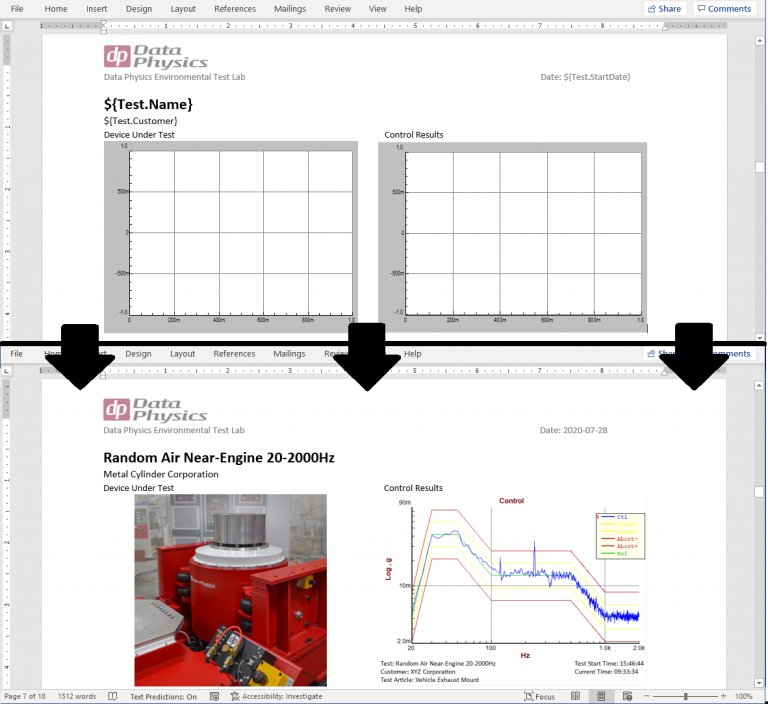DYNAMIC SIGNAL ANALYZERS
Turnkey Vibration Acquisition and Analysis Hardware Running on Easy to Use, Versatile, and Powerful Software
Compact and rugged, the 900 Series hardware is designed for the most demanding field or lab applications. With a modular, distributed architecture, the 900 Series can be expanded to over 1,000 channels for laboratory use. Read more on impact testing with the 900 Series.

Modular, Scalable Hardware
The new Abacus 900 Series hardware platform is a powerful, real-time, distributed digital signal processing system. The Gigabit Ethernet network architecture allows the systems to be used independently or combined to create larger systems with over 1,000 channels. Systems are comprised of channel cards with up to six channels per card. Two channels on each card are reconfigurable by the user as inputs, outputs or tachometers, allowing the system to be configured as needed for each test. Constant improvements have allowed the hardware warranty to be extended from 1 year to 3 years with the purchase of any new 900 Series system.
- Up to 216 kSamples/s for 80 kHz of alias-free bandwidth
- 24-bit analog-to-digital conversion with up to 150 dB dynamic range
- Channel-to-channel phase accuracy of better than 0.5 deg at 40 kHz
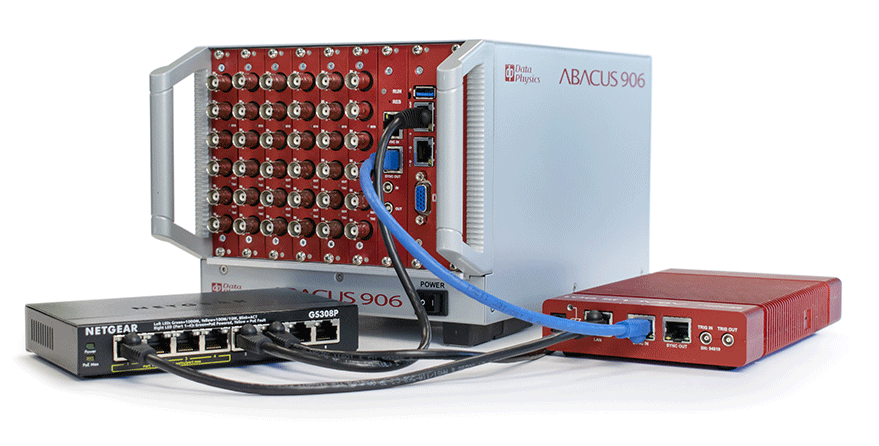
Abacus 901
The Abacus 901 is an ultra-portable system well-suited for both laboratory and field use.
Multiple systems can be combined for larger tests.
- Six channels (input/output/tach)
- Passive cooling for silent operation
- Power over Ethernet
- Remote and autonomous operation
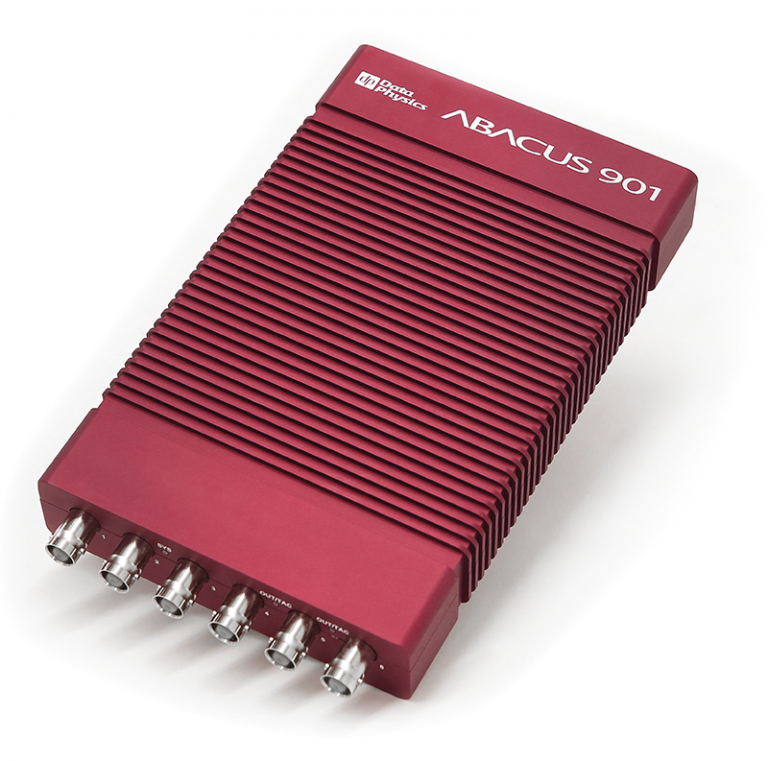
Abacus 906
The Abacus 906 is a compact, durable system which supports both voltage/IEPE and strain/bridge sensors. Multiple 906 and 901 systems can be combined to create larger systems.
- Up to 36 voltage or 24 strain/voltage channels (or a combination of the two)
- Multiple systems can be daisy-chained – expandable to over 1,000 channels
- Flexible input/output/tach configuration
- Quiet mode for acoustic applications
Abacus 912
The Abacus 912 is the latest Data Physics Analyzer/Controller that can be expanded to accommodate any size test.
- Up to 72 channels per chassis – expandable to over 1,000
- Flexible input/output/tach configuration
- Quiet mode for acoustic applications
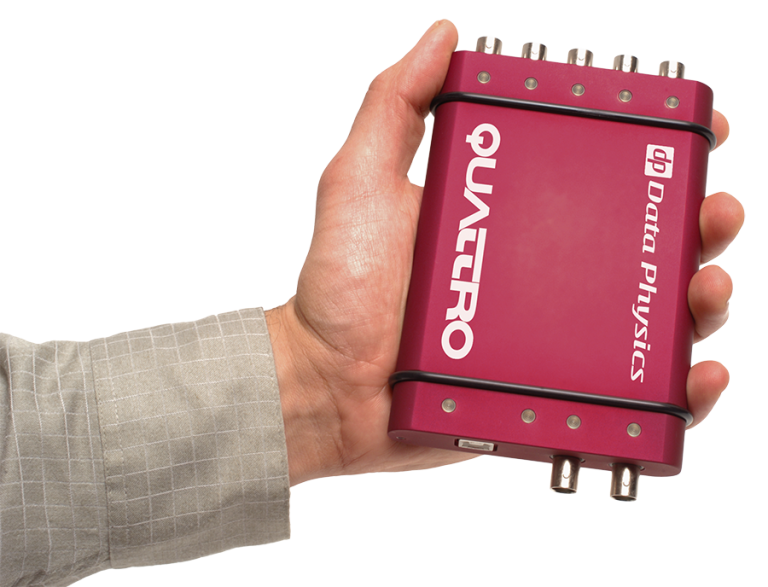
Quattro
The rugged USB-powered Quattro can travel with you and is fully operational – even in the absence of line power.
- 4 input channels, 2 sources
- USB powered
- 120-150 dB Dynamic Range
- Dedicated high speed tachometer input
Upgrade your Quattro to 900 Series Software
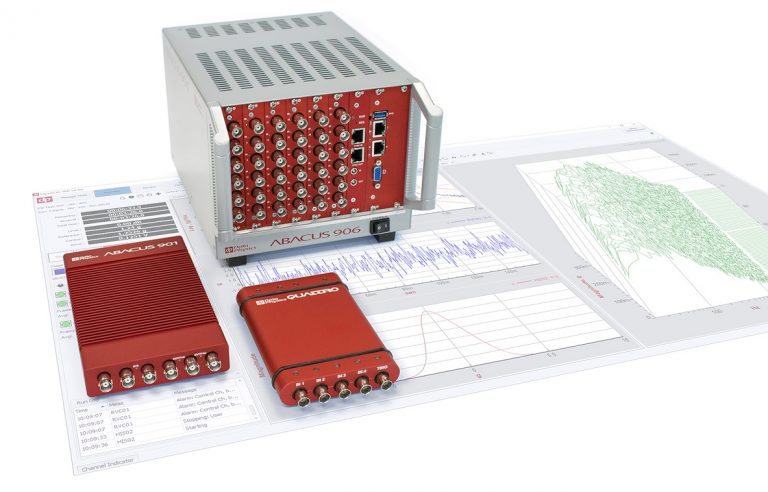
Applications
The 900 Series Dynamic Signal Analyzer software offers signal analysis solutions for a wide range of dynamic testing applications:
More Advancements and Enhancements Designed to Improve your Test and Measurement Performance
Significant changes and enhancements have been included in this release of the SignalCalc 900 software.
Access the Comprehensive 2.1 Release Notes
A Brief Overview of the New Features and Enhancements:
Improvements to SRS Synthesis and Control
Numerous improvements have been made to SRS Synthesis and Control, including the addition of time domain tolerances, copy/paste ability, and the ability to easily enter wavelets as a profile.
Change Output Waveform Parameters (Frequency, Level, Offset) During a Live Measurement
The ability to change the parameters of an output signal (e.g., a generated sine wave) live during the test has been added to SignalCalc 900. While running the test, the functionality appears at the bottom of the screen, in the Channel indicator’s output tab, as shown below.
Limiting in Mixed Mode (Sine/Random on Random)
The ability to limit in a Mixed Mode test has been added. A channel can be selected as a Limit channel in the Channels table; and a limiting PSD profile can be defined for the channel. During the test, the system will lower the drive to ensure the Limit channel’s PSD does not exceed its defined limit reference profile.
Importing SignalStar Scalar/Vector (700 Series) Tests into SignalCalc 900
The ability to import Random, Sine, and Classical Shock tests from SignalStar Controller has been added to SignalCalc 900. Tests parameters, profiles, and graph layouts are ported into SignalCalc 900 test and saved in the test database. In addition to this, signals and data taken on a SignalStar controller can be opened, viewed, and overlaid with new test data.
Importing test setups from SignalStar is done from the Import button in Manage Tests.
Application Sequencer Scripting Language
A scripting language has been added to the Application Sequencer, dramatically reducing the time to generate custom test sequences with the Sequencer. Application Sequencer files are now saved as .sqs files; which are text files that can be opened in a text editor.
In a text editor, the script can be modified rapidly to make more complex test sequences, create custom logic (using if/else logic statements) based on test status or external systems’ statuses (read through the Relay Card), change the currently executing test, change the test level, and more. The ability to edit the sequence files in the text editor make the Application Sequencer a powerful tool to automate an entire lab’s worth of equipment with the SignalCalc 900 software suite.
Extend Math Functions Across Multiple Channels
Now you can apply the same math equation to multiple channels automatically. Simply enable the multiple channels check box (as shown below) and indicate the desired channels. Use hyphen for continuation of channels or comma for specific channels.
In the below example, the band pass filter is applied to channels 1 through 12, 15 and 22. The system highlights the math channels in blue, indicating that they are all grouped together. You can edit the math function and apply the change to all the channels or ungroup them to edit individual channels, if preferred. Note, ungrouped channels cannot be grouped together again.
Triggering External Systems at a Specific Point in a Vibration Control Test
The ability to send an output trigger/pulse at a very specific time has been added to the SignalCalc 900 Vibration Controller. This is a sample-accurate way to trigger/sync external systems at a specific time during the vibration test. For example, an external system can be triggered exactly when the Random test reaches 0dB, or right when a Shock test reaches 0dB.
This functionality is now in the Sine, Random, and Shock/SRS controllers.
Consolidate Data from Multiple Data Servers
The ability to merge databases has been added to SignalCalc 900.
This functionality moves all tests, runs, recordings, and attachments from one data server to another. This functionality is useful if two test stands have previously been running independent data servers, and you want to aggregate them to a single data server.
Improvements to Data Servers, 900 System Distribution, and Networks
Enhancements have been added to SignalCalc 900 which lower the Network requirements for a single Data Server to be used by multiple test stands.
Now, a Data Server which stores data from one or multiple 900 system test stands can be on one network; while the 900 Systems are on a separate network. The host PC being used to drive the 900 Series Hardware needs to be connected to both networks; however, the 900 Series hardware and the Data Server do not need to be on the same network.
In addition, enhancements have been made which improve the performance of data transfers and reviews when running on a network which is slow or has delays.
Trace Color Management
Trace colors now have an automated method to select their colors, which can eliminate the need to individually select colors for specific traces. The Trace Color Manager allows the user to define default colors for traces; for example, assigning the same color to the same channel number (for Time, Frequency, SRS plots) or assigning Green to a reference signal and Red to a tolerance signal. This can reduce the number of clicks to bring up a properly colored Control/Alarm/Abort/Reference plot to just a few clicks.
The Trace Color Manager is accessed from the DP Menu’s Edit Signal Attributes menu. It is applied with the Signal Selector’s “Colors” button.
Improvements to the Application Interface (REST Interface)
Many new functions have been added to the Application (REST) Interface. This dramatically increases the functionality of the automation interface and allows for more custom automation interfaces.
These added functions include:
- Changing an output signal’s frequency/phase/amplitude live during a test
- Change the level (or stage) of a vibration control test live during test.
- Ability to create new tests and configure their test parameters
- Get a list of all tests in the database
Along with the existing ability to open/execute tests and grab live data, the automation possibilities with the REST interface are unlimited.
Time History Recording Linked to Primary Measurement
The ability to link a time history recording’s Start/Stop with an existing measurement’s start/stop has been added. The time history recording still has its own Start/Stop button; but now in addition it can also automatically start/stop when the primary measurement starts or stops.
With this function, if a vibration control test is running, the time history recording can automatically stop when the test stops; restart when the test restarts; etc.
Simplified Test and Analysis
The new SignalCalc 900 Series software makes the process of defining a test, making measurements, analyzing data and generating high-quality reports easier than ever before. All setup, project, test article, and customer information is saved along with measurement data in a database. Easily search for data from different test runs and test types for analysis and report generation.
- Manage tests and data using the built-in relational database
- Streamline testing by running multiple simultaneous real-time measurements
- Define custom real-time signal processing functions using mathematical operations, including, integration, differentiation, addition, subtraction, multiplication, division, matrix operations, filters (low pass, high pass and bandpass), Fourier Transform, Inverse Fourier Transform
- Generate high-quality custom reports
Enhanced Signal Analysis Tools
The SignalCalc 900 Series has a unique ability to add signal analysis measurements to a vibration control test. For example, narrowband FFT, third octave, and histogram measurements can run simultaneously with the vibration control test.
These measurements are configured using independent sample rates, bandwidths, block sizes, etc. Independent acquisition, analysis and control systems with separate hardware are no longer required. Signal analysis measurements are immediately available, removing the delay of waiting for post-processing of recorded data.
User-Defined Real-Time Signal Processing
SignalCalc 900 Series signal processing tools set includes user-defined custom signal processing. These algorithms are processed during the test in real-time using the embedded digital signal processors in the 901 hardware. The results of these algorithms may be displayed during the test and saved with test data. User-defined signal processing options include:
Channel Math
Creation of “User Channels” using mathematical operations on time-domain signals from input channels: Integration, Differentiation, Addition, Subtraction, Multiplication, Division of Channel, Matrix Math, Low Pass, High Pass, and Band Pass Filtering.
Signal Math
Creation of “User Signals” using mathematical operations on processed time and frequency domain signals: Addition, Subtraction, Multiplication, Division, FFT, IFFT, CFFT, ICFFT.
1 Math Channels
Math channels appear in setups, graphs, and data with physical channels. All related signal processing for the measurement or control are also performed on Math Channels.
2 Combine Math Operations
Use multiple math operations in a single function to build virtual channels.
Custom Reports and Data Review/Export
Fully Customizable Plots
Include readouts including test parameters, customer and test article name, operator, test time, etc
Overlay Data
Data from one or more runs can be overlaid in Review Mode within seconds. The overlaid plots can be placed in a report.
Data Export
Sweep data can be exported automatically at the end of a test.
Create Custom Report Templates in Microsoft Word
Create a report template in Microsoft Word and have SignalCalc 900 populate the report parameters, plots, and images automatically after each test (DP900-68)
Images and Media
Attach images of the test article or setup and have them printed in the report
Generate Reports Anywhere
Generate Reports on the PC that conducted the test, or on any networked PC
Access SignalCalc Dynamic Signal Analyzers Literature
Download data sheets and brochures in pdf format.

